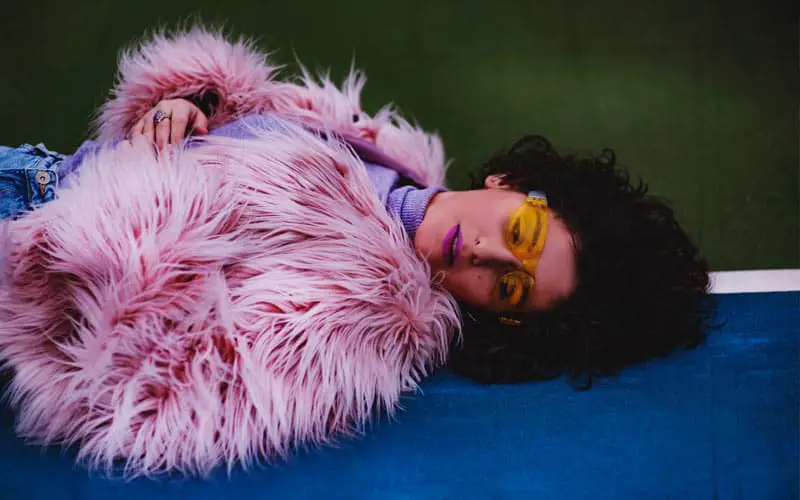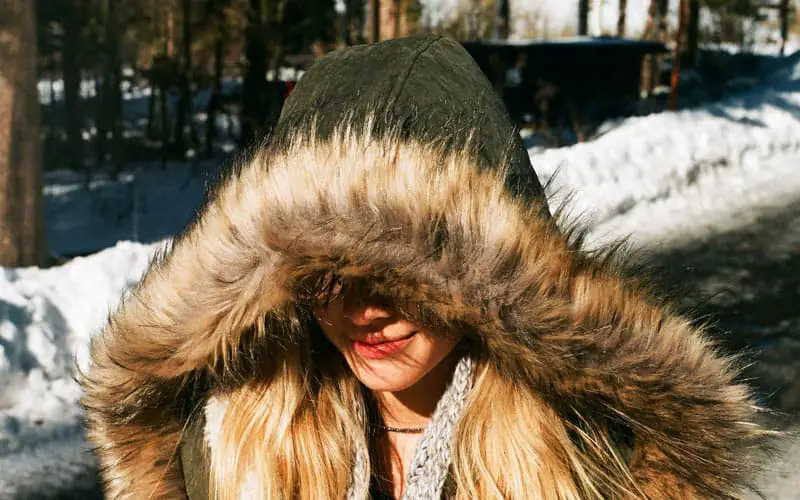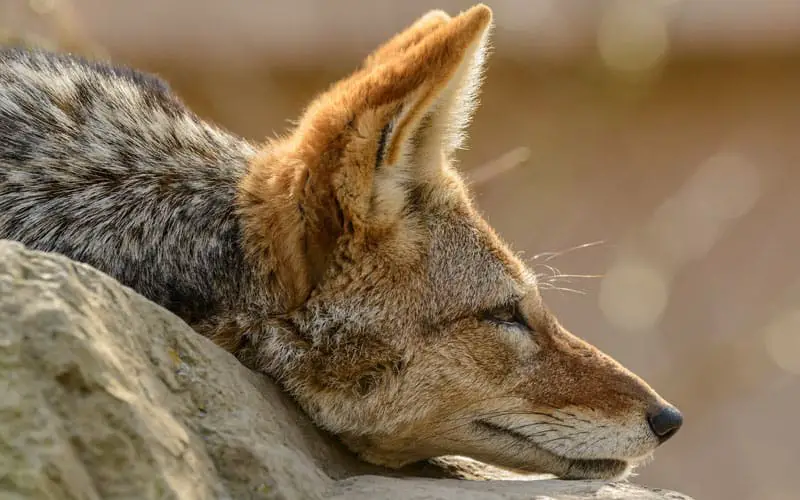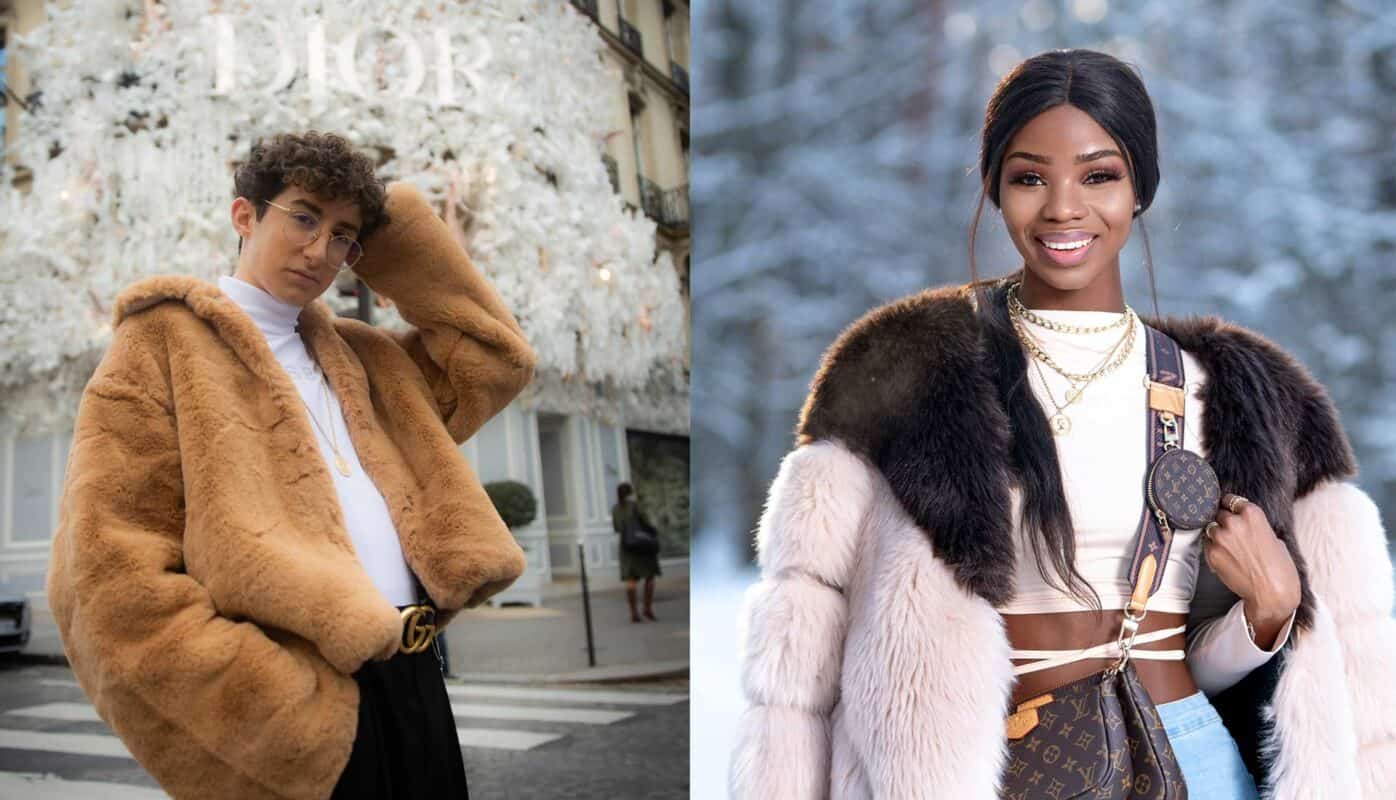The conditions in which fur is produced in the fashion and home décor industries have pushed organizations to fight against the use of animal fur by major brands around the world. This behavior change also affected consumers who become more aware of the cruelty behind fur goods, and inevitably famous luxury brands shifted to more responsible and sustainable materials in their collections.
So then, what luxury companies are fur-free in late 2024?
Luxury Brands Still Selling Fur (2024)
In this section, we are going to list the brands that are still selling fur products along with faux fur products in the fashion, décor, and home industries.

FENDI
The Italian luxury designer has made a big statement by ditching fur and the use of exotic animal skin. However, the brand is not totally banning fur yet. In fact, in their latest design lineup, the majority of the products were fur-free but many pieces were not devoid of animal fur. People are expecting more from the Italian designer at a time when other famous luxury fashion brands have completely shut down fur.
DIOR
The brand stance on animal rights regarding the use of fur is poor, and Dior remains of the few luxury Maisons to still produce fur items. Also, the brand tests its products on animals in China as required by the law, whereas other luxury stores shut down their retailers in China. These practices make Dior not cruelty-free in 2024.
A petition is still gathering votes from people all over the world ordering the brand: Go Fur free. More than 5000 activists already signed. Click on the link above if you want to make vote.
LOUIS VUITTON
We had some difficulty in finding out useful information about the French fashion firm. In fact, LVMH’s stance on using animal skin is unclear. The brand is still selling bags made out of exotic skin like crocodiles, and ostrich, claiming to PETA, that they are humanely farmed. The response of PETA is that there is no human way to farm animals for their skin or fur, hence we made the conclusion that Louis Vuitton is still not a cruelty-free brand in 2024.
If you want to contribute to voting against LVMH animal cruelty, visit this link and take action.
TOM FORD
The American fashion designer has recently spoken about his views on fashion and how he turned vegan after watching a movie called What the Health. He spoke to WWD (Women’s Wear Daily) about fur saying: “I have started using much more fake fur. I’m not yet ready to say that I’m fur-free… Now, however, I have limited the fur in these collections and going forward to food by-products, which does not sound sexy.”
This statement is clearly saying that Tom Ford still sells animal fur goods. He even defends his opinion and the freedom of choice. He also claims that faux fur products are made of non-biodegradable materials that are toxic to the environment while fur coats are recyclable and can be worn by generations of people.
This is partially true because he never mentions how these fur coats are produced and how many animals are tortured and killed in the process. Moreover, with the development of technology, new materials are nowadays explored to replace fur in a more sustainable manner.
FARFETCH
The luxury retailer banned real fur from its collections in 2019 adhering to a large group of luxurious fashion designers. After tens of thousands of appeals from people worldwide, the CEO succumbed to the pressure and dropped fur from the supply chains. However, according to PETA, the website of the brand still lists real rabbit fur items made from angora which is farmed in cruel and non-human conditions. The rabbits are tormented and twisted in unnatural positions to remove their hair.
This is totally unacceptable and contradictory to the Farfetch statement, and that makes the brand still not fur-free.
Luxury Brands Gone Fur Free (2024)

While some big brands have adopted faux fur products to align with the global conscience towards the fur ban, other major firms have completely removed fur products from their inventory and can be categorized entirely in fur-free brands.
We have thoroughly researched resources and asked for multiple supports in order to gather the list below. In the process of researching, we have used the furfreereteiler.com database in order to quickly spot the biggest brands that have joined the fur ban movement lately. Below you can find an exhaustive list of luxury brands that have banned fur from their lines.
GUCCI
The famous and most notorious luxury fashion brand in the world has gone fur-free in 2018. With the help of the Italian animal rights organization HSUS (humane society of the united states), Gucci took the step of banning furs like mink, coyote, raccoon dog or fox, or any other animal from their lines and introducing their new collections made of artificial materials in the Milan Fashion Week in 2018.
The CEO Marco Bizzarri stated that the remaining fur items will be sold in charity auctions.
CHANEL
Chanel agreed in 2018 to ban fur and exotic skins like crocodiles, lizards, and snakes. The brand wanted to maintain its ethical standards and reinforce its sustainability image among consumers. Not only that, but Chanel folded under big pressure from animal rights organizations. A spokesman from Chanel says that they are constantly reviewing their supply chains to meet the integrity and traceability of their products
HERMES
The brand is committed to implementing high standards of animal welfare and its operations. The company’s animal welfare policy guarantees rigorous traceability of its raw materials and strict control of its supply chain and production. The goal is to guarantee that the feathers used in the products are not coming from animals by implementing the responsible down standard (RDS) certification and the parent farm certification.
PRADA
The group announced that it will no longer use animal fur in its products or designs starting from 2020. But the group made a clear statement that materials considered to be a by-product of the meat like sheepskin or calfskin will still be used because people are also benefiting from their meat in the kitchen field. And this makes total sense.
The designer will now push the boundaries to focus on innovative materials following ethical practices and sustainable methods.
VERSACE
Donatella Versace which is the artistic director of the brand looks at the future of the firm’s responsibility towards people and the planet by saying:
“Fur? I am out of that. I don’t want to kill animals to make fashion.”
The CEO of Versace Jonathan Akeroyd confirms that fur products were already representing a minor part of the product line in 2019. In 2021, the products are completely fur-free.
ARMANI
The Luxury fashion designer Giorgio Armani was one the first to take a stance against animal abuse by pledging to end his company’s relationship with fur in 2016. It was one of the first luxury firms to make a good move and lead the way for other companies. PETA called their exit from animal fur production a remarkable victory for everyone.
The company owner added that the progress in technology allowed them to be more creative and break free from the dependence on animal cruelty in order to design fashionable products.
Resource: Download the official Armani statement on fur.
BURBERRY
After the British luxury brand was roasted for burning millions of dollars of their products in order to keep their high-end market value, Burberry responded that it would not only get rid of this practice but also go fur-free in 2018. Their CEO Marco Gobetti said that modern luxury doesn’t take into account environmental responsibility and customers care about their environment. He claimed that the remaining stock of fur goods will be sold and the new collections will all be made out of animal-free materials.
MICHAEL KORS
The American luxury fashion firm made the announcement of going fur-free in 2018 following pressure from animal rights activists and a change in customers’ behavior. Many PETA supporters protested on the streets in NY and San Francisco Fashion weeks, holding banners with the likes of “Kors kills animals” or “Michael Kors the designer of death” or “Animal Fur is not Fashion”.
It was not really an initiative from the brand owner, but now they are working with new techniques to replicate similar quality with animal-free materials for their lines and the Jimmy Choo line.
STELLA McCARTNEY
On the website of the famous luxury fashion brand, they clearly state that their commitment was to never use real fur since its launch in 2001. They have instead created and developed cruelty-free products that look and feel exactly like the real thing. Right now, their focus is shifted to ensuring that the materials they use are environmentally friendly like recycled or plant-based materials.
KERING LUXURY GOODS
The fashion houses owned by Kering joined the group of fur-free brands in 2021. Brands like BALENCIAGA, ALEXANDER McQUEEN, YVES SAINT LAURENT, and BOTTEGA VENETA will no longer use animal fur in their collections. The CEO of Kering, Francois-Henri Pinault said: “Going entirely fur-free is the right thing to do. We do it out of conviction, for the sake of ethics and modernity”.
TOMMY HILFIGER
The brand decided to ban fur from its products in 2017. Their executive told PETA that fur trims, collars, and sleeves will not contain fur anymore because every single piece, is the equivalent of animals suffering tremendously which totally unacceptable.
CALVIN KLEIN
Calvin Klein has been fur-free since 1994. We have found this article in the New York Times which explains the decision of the brand. Mr. Klein back in the day said:” my own reflections on the humane treatment of animals” and “the fact that the fur segment of our business simply did not fit with our corporate philosophy any longer,”
It seems like the company was way ahead of its time in 1994. Good job CK!
HUGO BOSS
The famous fashion brand had in place an animal welfare policy in 2016, which forces the company workers and partners to abide by the standards of animal wellbeing. This includes the banning of animal testing and also the banning of fur and exotic skins. Hugo Boss only uses skins when it is produced as a by-product of the food industry.
As a result of the company’s efforts, HUGO BOSS received the Vegan Fashion Award from PETA Germany in 2017. Afterward, they created the first vegan suit labeled “PETA-Approved Vegan”.
FILIPPA K
Filippa Knutsson is a Swedish woman who founded its brand in 1993 as a solution to the stress of dressing. Sustainably and careful choice of materials was the woman’s focus since the brand launch. Filippa says: “Since 1993 we’ve created clothing that meets the real needs of everyday life – with timeless style, quality, and fits. By ensuring each piece is designed to last, we can do our part in leaving the world a better place than we found it.”
By keeping the materials (a by-product of the meat industry) within a local and traceable supply chain, the Scandinavian brand can continue to ensure animal welfare and reduce its carbon footprint.
Famous Non-Luxury Fur Free Brands (2024)

Not only are luxury fashion retailers that have banned fur from their products, but there are hundreds of other famous companies, especially in fashion, home, and décor that got rid of animal skin. We have done the research and gathered information to make the list below.
These are 30 famous fur-free non-luxury brands:
| Adidas |
| Adolfo Dominguez |
| Armed Angels |
| Eastpak |
| Esprit |
| Furla |
| H&M |
| Inflation Victoria |
| Jack Wolfskin |
| Jack&Jones |
| Kipling |
| Lacoste |
| Lee |
| M&S |
| Mammut |
| Mango |
| Marc o polo |
| Nautica |
| Next |
| Otrium |
| River Island |
| S.Oliver |
| Sabinna |
| Svala |
| The North Face |
| Timberland |
| Topshop |
| Vans |
| Vero Moda |
| Wrangler |
| ZARA |
Major Organizations Fighting Against Fur Trade

When it comes to ditching fur, it is the fruit of long fights taken by big worldwide and national organizations for the purpose of achieving animal welfare and creating a better world. So, these are some major organizations that played a big role in banning fur sales.
PETA (People For The Ethical Treatment of Animals) was founded in 1990 by Ingrid Newkirk to focus on and fight for animal rights on both national and international levels.
They have achieved along with the year’s significant victories by forcing big luxury brands, even the untouchable ones, to finally stop the animal abuse in fur farms and stop its trade-in fashion clothing and home décor. It is the result of numerous investigations on fur farms in China and other countries.
The coalition to abolish the Fur Trade started in the UK in 1990 powered by volunteers and philanthropists to fight against the fur trade.
They first exposed the harsh truth of the cruelty that wild animals suffer during the process of fur farming and producing.
Respect for Animals emerged in 1993 in the UK following the demise of the Lynx in the mid-’80s. By the use of heavy marketing, they succeeded to affect the British consumer attitude towards the wearing of fur products. And that led to a massive drop in the number of stores selling animal fur to the point that it became difficult to find them.
Fur Free Alliance is an international coalition of 50 organizations based in more than 35 countries around the world working collaboratively to end the exploitation and killing of animals for fur. The coalition focuses on three interrelated priority areas which are political, corporate, and consumer areas.
The international anti-fur coalition (IAFC) was founded in 2006 regrouping more than 50 anti-fur organizations from all over the world. These organizations are working together to end animal suffering and to force designers to use synthetic materials. They are fighting to enforce laws and instore legislation to collect international tax when selling real fur.
The movement to go anti-fur has reach a peak in 2018 when the British Fashion Council went fur-free from every fashion show during all the week. That was the first major recognition of the banning of animal fur for fashion. The decision aimed for more sustainability in the fur industry and the support of the best practices and respect of the ethics code when it comes to the selection of materials and the supply chain.
During that week, a remarkable cultural change surveyed by the British fashion council was displayed by designer businesses and international brands as well as consumer sentiment. And that encouraged the moving away from natural fur.
Final Thoughts
Sometimes, some retailers mislabel their coats or throw blankets as faux fur when they are in reality made from animal skin. It happens a lot lately and this is why we created a guide where you can learn how to easily spot the difference between faux fur and a real fur coat to make a good decision.
Finally, we couldn’t find anything cheerful to add to our conclusion other than scary numbers, that will make you strongly believe that animal fur shouldn’t be sold anymore from now on.
- 100 million animals are killed each year for fur.
- 85 million animals are held prisoners in fur farms until their slaughtering.
- 100 animal can be killed for one coat.
It is a long fight but it is worth it, for the sake of the innocent animals and for the sake of mother nature.
Gandhi says: “The greatness of a nation and its moral progress can be judged by the way its animals are treated.”
We also have an article that compares animal fur and faux and why is the latter better. Read here: Why Is Faux Fur Better? [Don’t Read If You Hate Animals]


